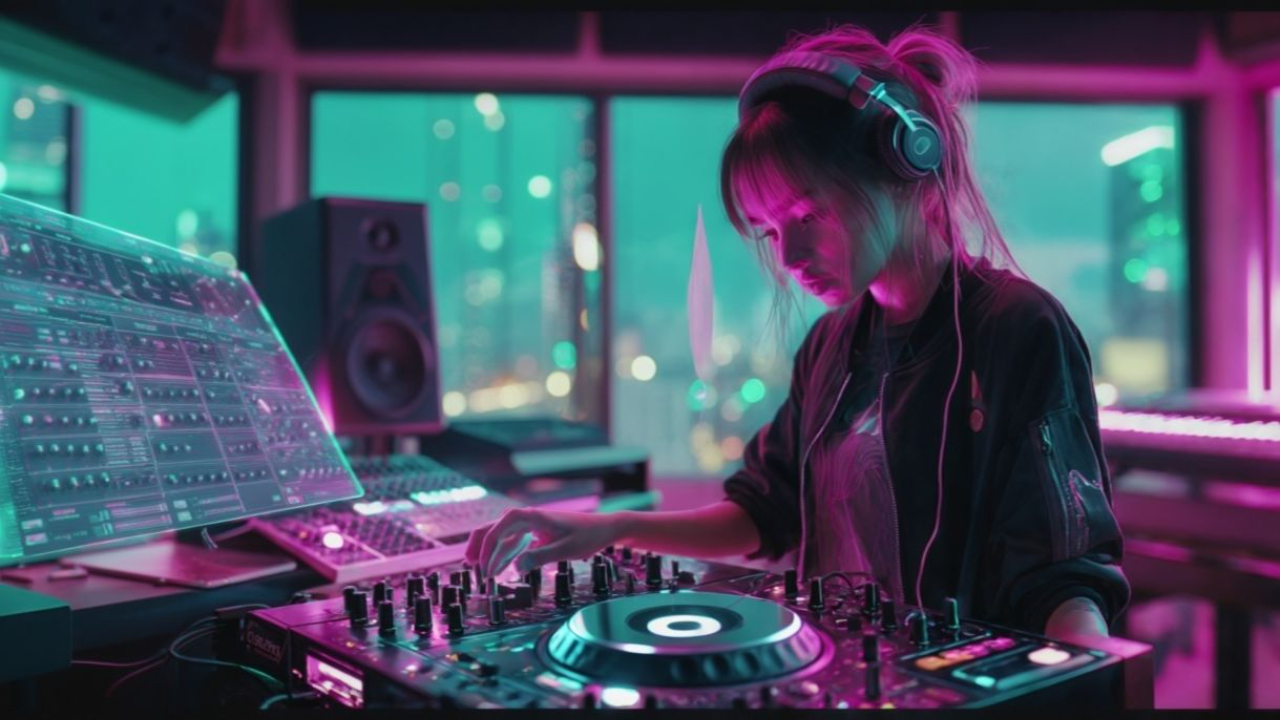Big Question: How can I evolve from a DJ into a fully-fledged electronic musician and start writing and producing my own original tracks?
Big Answer: By mastering key production techniques, building a home studio, and leveraging your DJ experience, you can transition from spinning tracks to creating them.
If you’ve been rocking dance floors as a DJ, taking the leap to electronic music production is a natural next step. Here are 9 steps to guide your transition and set you on the path to creating your own music.
1. Define Your Sound and Style
Your DJ experience gives you insight into what works on the dance floor.
- Analyze Your Favorites: Study the tracks you love playing for structure, energy, and instrumentation.
- Experiment with Genres: Blend styles to create a signature sound.
- Identify Your Strengths: Use your ear for rhythm and transitions to guide your production style.
2. Build a Basic Home Studio
Setting up a functional studio is your first step to hands-on production.
- Choose a DAW: Start with industry standards like Ableton Live, FL Studio, or Logic Pro.
- Invest in Equipment: Get essential gear like studio monitors, a MIDI controller, and an audio interface.
- Soundproof Your Space: Use acoustic panels and rugs to optimize your studio’s sound.
3. Learn Your DAW Inside and Out
Your Digital Audio Workstation is the heart of your production workflow.
- Explore Tutorials: Use YouTube and online courses to learn the basics.
- Practice Daily: Spend time experimenting with tracks, effects, and plugins.
- Start Simple: Create loops and short beats before attempting full songs.
How to Choose the Right DAW: A Comparison of the Top 5 DAWs in 2025
 ⭐️ Start by downloading all of my FREE Music Production Guides ⭐️ It took me years to learn this stuff
⭐️ Start by downloading all of my FREE Music Production Guides ⭐️ It took me years to learn this stuff
4. Master Beatmaking
Rhythm is the foundation of electronic music, and your DJ experience gives you an edge.
- Use Drum Machines: Experiment with drum racks and samplers to create compelling beats.
- Layer Percussion: Add hi-hats, claps, and snares to enhance energy and complexity.
- Apply Swing: Add groove to your beats to make them feel more human.
5. Get into Sound Design
Sound design lets you craft unique tones and textures for your tracks.
- Learn Synth Basics: Understand oscillators, filters, and envelopes to create custom sounds.
- Experiment with Presets: Modify existing sounds to fit your style.
- Layer Sounds: Combine multiple synths or samples for richer tones.
6. Focus on Song Structure
A well-structured track keeps listeners engaged from start to finish.
- Study DJ Sets: Use your DJ knowledge of builds, drops, and transitions as a foundation.
- Break Tracks into Sections: Start with an intro, build-up, drop, and outro.
- Use Automation: Gradually change effects and parameters to maintain interest.
Traditional Song Structure vs EDM Song Structure: What's the Difference?
 ⭐️ Learn Ableton Live & make your first song in 90 min. with my Free Online Ableton Live Course ⭐️
⭐️ Learn Ableton Live & make your first song in 90 min. with my Free Online Ableton Live Course ⭐️
7. Learn the Basics of Mixing
Blend all of the individual tracks of your songs (kick, snare, hi-hat, bass, vocal, etc.) so they sound balanced and clear.
- Balance Levels: Make sure no track element overpowers the mix...except maybe the vocal or kick.
- Use EQ Effectively: Cut unnecessary frequencies to make space for each sound.
- Apply Compression: Control dynamics and add punch to your mix.
The Magic Compressor Settings
8. Create and Finish Your First Track
Starting and completing a project is the best way to learn.
- Start Small: Focus on a short, loop-based track before creating full songs.
- Embrace Imperfection: Your first track won’t be perfect, but it’s a stepping stone.
- Get Feedback: Share your work with trusted friends or communities to refine your sound.
9. Build Your Identity as a Producer
As you transition, developing your brand is as important as your music.
- Pick a Producer Name: Keep it simple, memorable, and aligned with your style.
- Create a Visual Identity: Design a logo and build a social media presence.
- Leverage DJ Networks: Use your connections to promote your music and get gigs.
Final Thoughts
Transitioning from a DJ to an electronic musician is an exciting journey that builds on your existing skills while opening new creative possibilities. By mastering the basics, experimenting with production techniques, and embracing your unique style, you can create tracks that inspire dance floors worldwide. Start small, stay consistent, and let your music speak for itself. 🎶✨



 ⭐️ Start by downloading all of my
⭐️ Start by downloading all of my  ⭐️ Learn Ableton Live & make your first song in 90 min. with my
⭐️ Learn Ableton Live & make your first song in 90 min. with my 





